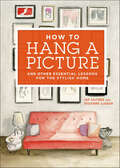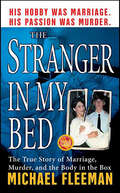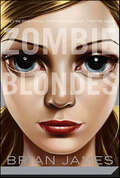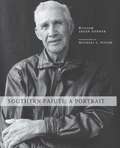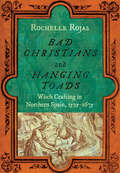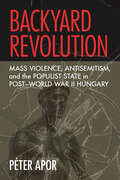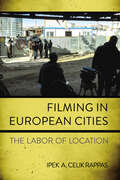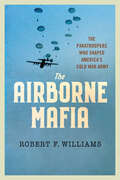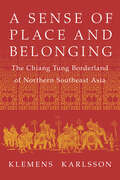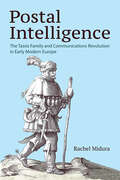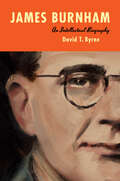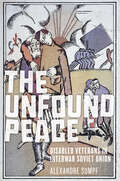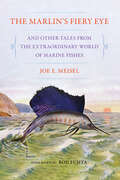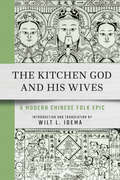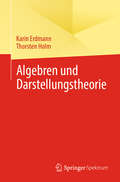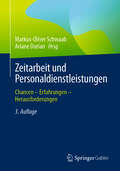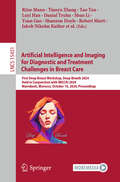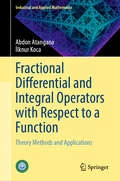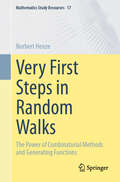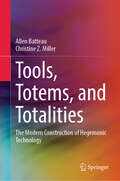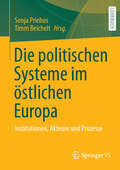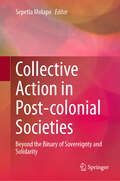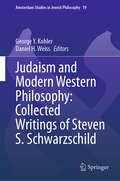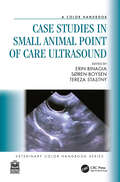- Table View
- List View
How to Hang a Picture: And Other Essential Lessons for the Stylish Home
by Jay Sacher Suzanne LaGasaLike tying a Windsor knot or brewing a perfect cup of coffee, knowing how to hang art on your wall is a hallmark of everyday style and nuts-and-bolts know-how. The where, what, and whys of hanging art are an overlooked, under-appreciated line of inquiry. Most of us simply wing it with a quick eyeball and a swing of the hammer. How hard can it be? we think. What can go wrong? The answer, of course, is plenty: crumbling plaster, ruined antique laths, mismatched art hung too-close together, or a poorly-mounted photograph warping in its frame. But beyond the technical mishaps, there is a more essential lesson to be learned: The skill and consideration with which you decorate your home makes an aesthetic statement about the world you inhabit-and more importantly, when it's done right, it very clearly looks a whole lot better. Slim and stylish, How to Hang a Picture: And Other Essential Lessons for a Stylish Home is a user-friendly guidebook that details everything you need to know about hanging, framing, decorating and displaying art. If Strunk & White's Elements of Style was crossed with a no-nonsense how-to manual, you will have captured the tone and immediacy of How to Hang a Picture: simple rules and essential information presented with charm and intelligence.
The Stranger in My Bed: The True Story of Marriage, Murder, and the Body in the Box (St. Martin's True Crime Library)
by Michael FleemanThe Stranger in My Bed from journalist Michael Fleeman presents the chilling true story of one woman who escaped the deadly hold of the killer she loved and married; and of the grieving families of his victims who banded together after nearly thirty years to prove that justice never forgets. Or forgives.He Found New Brides To Love Him-All Diane Bertalan really knew of her new husband, John, was that he was a widower, he lavished her with gifts, and he preferred to keep his past a secret. What she didn't know was that the FBI had been watching him for years. In the Fall of 2000, she found out why-it was a crime that had been haunting authorities for decades. They called it the mystery of the Lady in the Box.Fifteen Years Later, Police Found The Remains...A decaying body that had been left along an Indiana roadside ditch in 1980 had finally been identified as Janice Hartman. In 1974, the Ohio woman had been reported missing by her estranged husband...John David Smith. The gruesome discovery was only the beginning of Diane Smith's brutal awakening--for Hartman was only the first of Smith's wives to have vanished off the face of the earth.
Zombie Blondes
by Brian JamesThey're beautiful. They're popular. They're dead. . . .From the moment Hannah Sanders arrived in town, she felt there was something wrong. A lot of houses were for sale, and the town seemed infected by an unearthly quiet. And then, on Hannah's first day of classes, she ran into a group of cheerleaders -- the most popular girls in school.The odd thing was that they were nearly identical in appearance: blonde, beautiful, and deathly pale.But Hannah wants desperately to fit in -- regardless of what her friend Lukas is telling her: If she doesn't watch her back, she's going to be blonde and popular and dead -- just like all the other zombies in this town. . . ."This foray into the world of the living dead is suspenseful and downright terrifying, with an ending right out of a classic film." -- Kirkus Reviews
Southern Paiute: A Portrait
by Logan HebnerNow little recognized by their neighbors, Southern Paiutes once had homelands that included much of the vast Colorado Plateau, Great Basin, and Mojave Desert. From the Four Corners’ San Juan River to California’s lower Colorado, from Death Valley to Canyonlands, from Capitol Reef to the Grand Canyon, Paiutes lived in many small, widespread communities. They still do, but the communities are fewer, smaller, and mostly deprived of the lands and resources that sustained traditional lives. To portray a people and the individuals who comprise it, William Logan Hebner and Michael L. Plyler relay Paiute voices and reveal Paiute faces, creating a space for them to tell their stories and stake claim to who they once were and now are.
Bad Christians and Hanging Toads: Witch Crafting in Northern Spain, 1525–1675
by Rochelle RojasBad Christians and Hanging Toads tells riveting stories of witchcraft in everyday life in early modern Navarra. Belief in witchcraft not only emerged in moments of mass panic but was woven into the fabric of village life. Some villagers believed witches sickened crops and cows with poisonous powders, others thought they engaged in diabolism and perverted sex, and still others believed they lovingly raised toads used to commit evil deeds. Most villagers, however, simply saw witches as those with reputations of being mala cristianas—bad Christians. Rochelle Rojas illuminates the social webs of accusations and the pathways of village gossip that created the conditions for the witch beliefs and trials of the period.While studies of witchcraft in Spain tend to focus on the inquisitorial trials and witch panic of 1609–14, Bad Christians and Hanging Toads turns to witch trials conducted by the region's secular judiciary, Navarra's royal tribunals, tracing the prosecution of accused witches over 150 years. Using detailed evidence from trial records and neighbors' testimonies, Rojas vividly brings to life the women and men crafted as witches by their neighbors and the authorities and guides readers through the judicial process, from accusations and the examination of the evidence to sentencing and punishment.By privileging the voices of villagers throughout, Bad Christians and Hanging Toads demonstrates that the inner logic of early modern European witchcraft trials can be understood only by examining of the local, everyday aspects of witch belief.
Backyard Revolution: Mass Violence, Antisemitism, and the Populist State in Post–World War II Hungary
by Péter AporBackyard Revolution contributes in-depth sociocultural histories of the popular antisemitic pogroms that shook Hungary in the spring and summer of 1946. Expanding the scope of investigation of serial mass violence toward Jewish communities beyond the cases in Poland suggests that antisemitic violence was general in postwar Central and Eastern Europe and that it spoke to central components of popular notions of society and politics. Péter Apor gives new impetus to rethink the explanations of collective violence, including antisemitic ones. He considers collective violence as a particular form of political participation and examines post-Holocaust antisemitic violence as one of its perverse ways. Drawing on previously unknown archival sources, Backyard Revolution explores how collective violence produced categories and divisions in society and how these in turn attempted to shape the institutions of the state. It further addresses the political participation of powerless groups and highlights components of everyday life and resistance that engendered power structures and hierarchies. These important theoretical premises concerning the subaltern politics provide a new template for understanding the emergence of communist dictatorships in Central and Eastern Europe. Setting the genesis of communist dictatorships at the crossroads of popular expectations toward the state, anchored to the culture of the everyday, and elites' attempts to mobilize mass support, Backyard Revolution has implications beyond regional borders and adds to the understanding of growing populist governance worldwide.
Filming in European Cities: The Labor of Location
by Ipek A. Celik RappasFilming in European Cities explores the effort behind creating screen production locations. Ipek A. Celik Rappas accounts the rising demand for original and affordable locations for screen projects due to the growth of streaming platforms. As a result, screen professionals are repeatedly tasked with chores such as transforming a former factory in Istanbul to resemble a war zone in Aleppo, or finding a London street that evokes Barcelona. Celik Rappas highlights the pivotal role crew members play in transforming cities and locations into functional screen settings. Examining five European media capitals—Athens, Belfast, Berlin, Istanbul, and Paris—the book delves into the overlooked aspects of location-related screen labor and its ability to generate production value. Filming in European Cities demonstrates that in its perpetual quest for authentic filming locations, the screen industry extracts value from cities and neighborhoods, their marginalized residents, and screen labor, enriching itself through this triple exploitation.
The Airborne Mafia: The Paratroopers Who Shaped America's Cold War Army (Battlegrounds: Cornell Studies in Military History)
by Robert F. WilliamsThe Airborne Mafia explores how a small group of World War II airborne officers took control of the US Army after World War II. This powerful cadre cemented a unique airborne culture that had an unprecedented impact on the Cold War US Army and beyond.Robert F. Williams reveals the trials and tribulations this group of officers faced in order to bring about their vision. He spotlights the relationship between organizational culture, operational behavior, and institutional change in the United States Army during the Cold War, showing that as airborne officers ascended to the highest ranks of the army they transmitted their culture throughout their service in four major ways—civil-military relations, preparation for potential atomic combat, helicopter airmobility, and strategic response forces. Experiences of training and commanding airborne divisions in World War II led these men to hold sway in army doctrine by the mid-1950s. Dominating institutional thought and imparting their values, beliefs, and norms throughout the service they enjoyed a special privilege within the group culture. Williams demonstrates this impact, privilege, and power by focusing on the paratrooper triumvirate of Matthew Ridgway, Maxwell Taylor, and James Gavin and the lasting impression they made on how the US Army fought.The Airborne Mafia illuminates the power subcultures can have in changing their parent cultures over time, particularly one as set in its ways and as large as the US Army. With a deft touch, deep research, and an unwavering eye for the human stories behind organizational change, Williams helps explain the existence and importance of the paratrooper mystique that remains within the military still today.
A Sense of Place and Belonging: The Chiang Tung Borderland of Northern Southeast Asia (NIU Southeast Asian Series)
by Klemens KarlssonA Sense of Place and Belonging examines a marginalized society, Chiang Tung (Keng Tung) in the Eastern Shan State of Myanmar, between the dominant cultures of the Burmese, Chinese, and Siamese/Thai. Chiang Tung sits at the historic borderland known as the Golden Triangle, an area marked by drug trade, human trafficking, and civil war. Hiding a glorious literary and visual cultural tradition from the fourteenth century, Chiang Tung is remarkable for how well it has maintained its Buddhist culture in the turbulent history of war and forced resettlement that formed northern Southeast Asia. Klemens Karlsson examines the connection between the Buddhist traditions, the ancient cult of territory spirits—a cult of the earth, place, and village that forms a kind of religious map—and the monsoon culture of wet rice irrigation. Tying together myths and memories told by local people and written in local chronicles with the unique performance of the Songkran festival, which dramatizes a symbolic agreement between Tai Khuen people and the indigenous Lua/Lawa people, A Sense of Place and Belonging presents a historical, political, religious, and cultural context connecting the present with the past, the local with the global, and tradition with change and transformation.
Postal Intelligence: The Tassis Family and Communications Revolution in Early Modern Europe
by Rachel MiduraPostal Intelligence connects and situates histories of the post and government intelligence alongside print technology and state power in the wider context of the early modern communications revolution. In the sixteenth century, postal services became central to domestic governance and foreign policy enterprises, extended government reach and surveillance, and offered new control over the public sphere.Rachel Midura focuses on the Tassis family, members of which served as official postmasters to the dukes of Milan, the pope, Spanish kings, and Holy Roman emperors. Using administrative records and family correspondence, she follows the Tassis family, their agents, and their rivals as their influence expanded from northern Italy across Europe. Postal Intelligence shows how postmasters and postmistresses were key players in early modern diplomacy, commerce, and journalism, whose ultimate success depended on both administrative ingenuity and strategic ambiguity.
James Burnham: An Intellectual Biography
by David T. ByrneIn this intellectual biography of one of the most important political thinkers of the twentieth century, David T. Byrne reveals the fascinating life of James Burnham. Beginning his intellectual career as a disciple of Leon Trotsky, Burnham preached socialist revolution to the American working classes during the Great Depression. In 1940 he split with Trotsky over the nature of the USSR. Attempting to explain the world that was emerging in the early days of World War II, Burnham penned one of the most successful political works of the early 1940s, titled The Managerial Revolution. This dystopian treatise predicted collectivization and rule by bland managers and bureaucrats. Burnham's next book, The Machiavellians, argued that political elites seek only to obtain and maintain power, and democracy is best achieved by resisting them.After World War II, Burnham became one of the foremost anticommunists in the United States. His The Struggle for the World and The Coming Defeat of Communism remain two of the most important books of the early Cold War era. Rejecting George F. Kennan's policy of containment, Burnham demanded an aggressive foreign policy against the Soviet Union. Along with William F. Buckley, Burnham helped found National Review magazine in 1955, where he expressed his political views for more than two decades.As Byrne shows in James Burnham, the political theorist's influence has stretched from George Orwell to Ronald Reagan to Donald Trump's base. Burnham's ideas about the elite and power remain part of US political discourse and, perhaps, have more relevance than ever before.
The Unfound Peace: Disabled Veterans in Interwar Soviet Union (NIU Series in Slavic, East European, and Eurasian Studies)
by Alexandre SumpfThe Unfound Peace is the first book dealing with disabled former servicemen of tsarist Russia in all regards—socioeconomic status, healthcare, social reintegration into families and communities, self-representation—and the only one comparing World War I and Russian Civil War veterans. Alexandre Sumpf considers the ways disabled Great War veterans tried to live under the Bolsheviks and compares their experiences with those of the Red Army veterans who received special considerations from the new regime. Offering a history of the body and health in relation to work, The Unfound Peace also compares the situation of disabled veterans with that of disabled workers who were subject to the same demands of extreme productivity but benefited from better social protection, though they dealt with accusations that they were faking their disabilities. Sumpf's exploration of disabled veterans, with transnational comparisons, offers the possibility of rereading the history of the first generation of Soviets through the collective and private memory of war, in the USSR and in exile.
The Marlin's Fiery Eye and Other Tales from the Extraordinary World of Marine Fishes
by Joe E. MeiselThe Marlin's Fiery Eye and Other Tales from the Extraordinary World of Marine Fishes dives into the mystery and wonder of the daily lives of saltwater fishes. Joe E. Meisel introduces readers to the fascinating behaviors, remarkable adaptations, and complex life histories of the many species that call the oceans home.From the shallows, where penetrating sunlight encourages bright colors and extravagant patterns in fish, to the abyssal depths, where extreme conditions are countered in bizarre ways, this book illuminates the staggering diversity of ocean life. Discussions of unique characteristics and lifestyles are accompanied by narratives from scientists and fish lovers, with detailed illustrations throughout. Meisel also explores the challenges facing global fisheries today, connecting the book's featured species with questions and opportunities surrounding food demand, aquaculture, and sustainability.Each fish has a story to tell in The Marlin's Fiery Eye and Other Tales from the Extraordinary World of Marine Fishes, and through each story readers will discover an awe and a fascination for the oceanic inhabitants that we so rarely get to witness.
The Kitchen God and His Wives: A Modern Chinese Folk Epic
by Wilt L. IdemaThe Kitchen God and His Wives is a modern folk epic on the origin of the Stove God, widely venerated across China. In this tale, the Stove God (or Kitchen God) begins as a mortal man who owes his wealth and success to his loyal wife, the long-suffering Guo Dingxiang. Guo's ungrateful husband divorces her, losing his fortune and eventually becoming a beggar. When he receives charity from his former wife, he is filled with remorse and kills himself by jumping into the stove. This act elevates both the man and his wife to godhood. Set in China's countryside and ranging from heaven to hell, this tale provides a look at traditional marriage customs and the uses and abuses of fortune telling in southeastern Henan. This volume contains Wilt L. Idema's full and annotated translation of the Guo Dingxiang epic together with an extensive study of the textualization of this work in the years following the Cultural Revolution. The Kitchen God and His Wives offers a valuable look at Chinese folk culture and traditional storytelling.
Algebren und Darstellungstheorie
by Karin Erdmann Thorsten HolmDieses sorgfältig verfasste Lehrbuch bietet eine zugängliche Einführung in die Darstellungstheorie von Algebren, einschließlich Darstellungen von Köchern. Das Buch beginnt mit grundlegenden Themen zu Algebren und Moduln und behandelt fundamentale Ergebnisse wie den Satz von Jordan-Hölder über Kompositionsreihen, den Satz von Artin-Wedderburn über die Struktur halbeinfacher Algebren und den Satz von Krull-Schmidt über unzerlegbare Moduln. Die Autoren behandeln anschließend detailliert Darstellungen von Köchern bis hin zu einem vollständigen Beweis von Gabriels berühmtem Satz, der die Darstellungstypen von Köchern anhand von Dynkin-Diagrammen charakterisiert. Das Lehrbuch benötigt nur Grundkenntnisse über lineare Algebra sowie Gruppen, Ringe und Körper und richtet sich an Studierende ab dem dritten Studienjahr. Mit zahlreichen Beispielen, die abstrakte Konzepte veranschaulichen, und mehr als 200 Übungen (mit Lösungen zu etwa einem Drittel davon), bietet das Buch eine beispielorientierte Einführung, die sich sowohl für das Selbststudium als auch zur Begleitung von Vorlesungen eignet.
Zeitarbeit und Personaldienstleistungen: Chancen - Erfahrungen - Herausforderungen
by Markus-Oliver Schwaab Ariane DurianDie 3., vollständig überarbeitete und aktualisierte Auflage gibt einen zugleich wissenschaftlich fundierten und praxisnahen Überblick über die Zeitarbeit und die angrenzenden Personaldienstleistungen in Deutschland. Sie beschreibt die Entwicklung dieser wichtigen Branche, die rechtlichen Rahmenbedingungen, die zentralen Akteure und innovative Lösungen. Beleuchtet werden aus unterschiedlichen Perspektiven in über 30 Beiträgen auch die Chancen und Risiken, die mit der Zeitarbeit als Beschäftigungsform verbunden sind. Die relevanten Interessengruppen kommen zu Wort: Wissenschaftler, Personalmanager, Personaldienstleister, Volks- und Betriebswirte, Juristen, aber auch Vertreter aus Verbänden und Gewerkschaften.
Artificial Intelligence and Imaging for Diagnostic and Treatment Challenges in Breast Care: First Deep Breast Workshop, Deep-Breath 2024, Held in Conjunction with MICCAI 2024, Marrakesh, Morocco, October 10, 2024, Proceedings (Lecture Notes in Computer Science #15451)
by Yuan Gao Shuo Li Shandong Wu Ritse M. Mann Tianyu Zhang Tao Tan Luyi Han Danial Truhn Shannon Doyle Robert Martí Marly Jakob Nikolas Kather Katja Pinker-Domenig Geert LitjensThis book constitutes the refereed proceedings of the First Deep Breast Workshop on Artificial Intelligence and Imaging for Diagnostic and Treatment Challenges in Breast Care, Deep-Breath 2024, held in conjunction with the 26th International Conference on Medical Imaging and Computer-Assisted Intervention, MICCAI 2024, in Marrakesh, Morocco, on October 10, 2024.The 23 regular papers presented in this book were carefully reviewed and selected from 51 submissions.The workshop provides an international platform for presentation of - and discussion on - studies related to AI in breast imaging. Deep-Breath aims to promote the development of this research area by sharing insights in academic research and clinical practice between clinicians and AI experts, and by exploring together the opportunities and potential challenges of AI applications in breast health. The deep-breath workshop provides, therefore, an unique forum to discuss the possibilities in this challenging field, aiming to create value that eventually truly leads to benefit for physicians and patients.
Fractional Differential and Integral Operators with Respect to a Function: Theory Methods and Applications (Industrial and Applied Mathematics)
by Abdon Atangana İlknur KocaThis book explores the fundamental concepts of derivatives and integrals in calculus, extending their classical definitions to more advanced forms such as fractional derivatives and integrals. The derivative, which measures a function's rate of change, is paired with its counterpart, the integral, used for calculating areas and volumes. Together, they form the backbone of differential and integral equations, widely applied in science, technology, and engineering. However, discrepancies between mathematical models and experimental data led to the development of extended integral forms, such as the Riemann–Stieltjes integral and fractional integrals, which integrate functions with respect to another function or involve convolutions with kernels. These extensions also gave rise to new types of derivatives, leading to fractional derivatives and integrals with respect to another function. While there has been limited theoretical exploration in recent years, this book aims to bridge that gap. It provides a comprehensive theoretical framework covering inequalities, nonlinear ordinary differential equations, numerical approximations, and their applications. Additionally, the book delves into the existence and uniqueness of solutions for nonlinear ordinary differential equations involving these advanced derivatives, as well as the development of numerical techniques for solving them.
Computational Intelligence in Communications and Business Analytics: 6th International Conference, CICBA 2024, Patna, India, January 23–25, 2024, Revised Selected Papers, Part I (Communications in Computer and Information Science #2366)
by Paramartha Dutta Somnath Mukhopadhyay Amit Kumar Singh Jyoti Prakash Singh Jyotsna K. Mandal Maheshwari Prasad SinghThis three-volume set CCIS 2366-2368 constitutes the refereed proceedings of the 6th International Conference on Computational Intelligence in Communications and Business Analytics, CICBA 2024, held in Patna, India, during January 23–25, 2024. The 82 full papers presented in this volume were carefully reviewed and selected from 249 submissions. Together, these papers showcase cutting-edge research in the fields of computational intelligence and business analytics, covering a broad range of topics.
Very First Steps in Random Walks: The Power of Combinatorial Methods and Generating Functions (Mathematics Study Resources #17)
by Norbert HenzeWith this book, which is based on the third edition of a book first written in German about random walks, the author succeeds in a remarkably playful manner in captivating the reader with numerous surprising random phenomena and non-standard limit theorems related to simple random walks and related topics. The work stands out with its consistently problem-oriented, lively presentation, which is further enhanced by 100 illustrative images. The text includes 53 self-assessment questions, with answers provided at the end of each chapter. Additionally, 74 exercises with solutions assist in understanding the material deeply. The text frequently engages in concrete model-building, and the resulting findings are thoroughly discussed and interconnected. Students who have tested this work in introductory seminars on stochastics were particularly fascinated by the interplay of geometric arguments (reflection principle), combinatorics, elementary stochastics, and analysis. This book is a translation of an original German edition. The translation was done with the help of artificial intelligence. A subsequent human revision was done primarily in terms of content, so that the book will read stylistically differently from a conventional translation.
Tools, Totems, and Totalities: The Modern Construction of Hegemonic Technology
by Allen Batteau Christine Z. MillerThis book provides a critical perspective on technology, answering the questions of why technologies often disappoint. It takes a sociotechnical and historical perspective on technology, as developed by an engineer–anthropologist and a design anthropologist, to answer questions not only about why modern societies have great expectations of technology, but also of why these technologies often fail to meet expectations. Modern societies often search for technological solutions (“technofixes”) to what are institutional problems, which include border crossings or urban mobility, or improvements in productivity or improved communication. It is disappointing when technofixes, whether border walls or driverless cars or social media, fail to live up to their promises of greater personal autonomy (such as afforded by driverless cars) or improved social harmony through social media. Examining technology from the perspectives of instrumentality (“tools”), identity (“totems”), and world-defining systems (“totalities”) develops a comprehensive perspective that is at once historically informed and cross-culturally accurate. Although instrumentality is obvious and is at the core of any understanding of technology, identity is less so; yet many modern “tribes” create their identity in terms of technological objects and systems, whether transport systems (cars and airplanes) or social media or weapons (guns). Further, modern technologies span the globe, so that they exert imperative coordination over distant populations; the use of cell phones around the world is testimony to this fact. Such a critical perspective on technology can be useful in policy discussions of numerous issues affecting contemporary institutions.
Die politischen Systeme im östlichen Europa: Institutionen, Akteure und Prozesse
by Timm Beichelt Sonja PriebusDas Buch bietet eine vergleichende Darstellung der politischen Systeme der Staaten des östlichen Europa, d.h. aller Staaten in Mittel-, Ost- und Südosteuropa. Die insgesamt 22 Länderkapitel beschreiben und analysieren zentrale Institutionen wie Parlament, Regierung, Staatspräsident und das Wahlsystem. Um der starken Dynamik von Transformation und Post-Transformation Rechnung zu tragen, wird auch die soziale und historische Einbettung der Institutionen beleuchtet. Das Buch richtet sich an Studierende der Politikwissenschaft sowie an alle Personen, die sich für die dynamischen politischen Entwicklungen im Osten Europas interessieren.
Collective Action in Post-colonial Societies: Beyond the Binary of Sovereignty and Solidarity
by Sepetla MolapoThis book offers an exploration of collective action by bringing together the themes of sovereignty and solidarity in post-colonial societies in Africa and beyond. It does so against a common tradition of writing about collective action that assumes an opposition between the state as a legal framework of unity and social movements that express the aspirations of marginalized people. The book’s examination of collective action resists this binary division. It states that sovereignty can be imagined beyond the confines of the law and consequently beyond the centrality of the state. Power therefore appears as a construct of forces and factors that signal or gesture to a complex but fascinating way of imagining collective action. These forces and factors open our eyes to the dynamics of life in post-colonial societies in ways that the understanding of sovereignty centred on law conceals. Brought into an intimacy with solidarity, sovereignty opens collective action to nuanced, complex and multiple configurations that surpass binary thinking. This is an innovative approach and of interest to students and scholars from across the social sciences.
Judaism and Modern Western Philosophy: Collected Writings of Steven S. Schwarzschild (Amsterdam Studies in Jewish Philosophy #19)
by Steven S. SchwarzschildWhat are the implications of Franz Rosenzweig's quasi-racialist commonalities with Heidegger's thought? Was Kant a 'Jewish thinker'? Does Spinoza's philosophy lend support to totalitarianism? Was Marx's philosophy more shaped by Jewish cultural tradition than is typically assumed? Was there a strong challenge to Strauss's reading of Maimonides already in the 1940s? This volume contains a collection of Steven S. Schwarzschild's (1924-1989) most important unpublished works, the majority of which were found in his literary remains. The essays present provocative perspectives on influential philosophical figures such as Maimonides, Spinoza, Kant, Hegel, Marx, Rosenzweig, Heidegger, and Leo Strauss. As one of the most original twentieth-century thinkers in the field of Jewish philosophy, Schwarzschild's analysis provides readers with new ways of understanding modern Western philosophy, Jewish religious tradition, and the relation between them.
Case Studies in Small Animal Point of Care Ultrasound: A Color Handbook (Veterinary Color Handbook Series)
by Erin Binagia, Søren Boysen, Tereza StastnyThis illustrated practical guide covers the many facets of small animal point-of-care ultrasound (POCUS) using clinical cases commonly seen in practice. It details specific point-of-care ultrasound techniques, views, interpretations, pitfalls and knowledge gaps, highlighting the utility of initial and serial POCUS for both diagnostic and patient management purposes. Divided into seven sections, the book covers ultrasound of the pleural space and lungs, heart, and abdomen, as well as the Caudal Vena Cava Collapsibility Index (CVC-CI), miscellaneous and advanced cases.Authored by leading authorities in the field, this guide recognizes the strengths of POCUS in screening and monitoring while also highlighting the limitations of using it as a sole diagnostic tool. Focusing on commonly asked questions and applications, the authors take a binary question approach to veterinary POCUS, which has been shown to decrease errors in human POCUS.Case videos to accompany Chapters 4, 5, 7, 9, 11, 13 and 15 are available on the book’s Companion Website at https://routledgetextbooks.com/textbooks/9780367547257/. These can be accessed directly on a smartphone using the QR codes in the relevant chapters.This full-colour handbook is the ideal reference for small animal and mixed practitioners, including general veterinary practitioners, emergency veterinarians, interns, residents and veterinary students.
